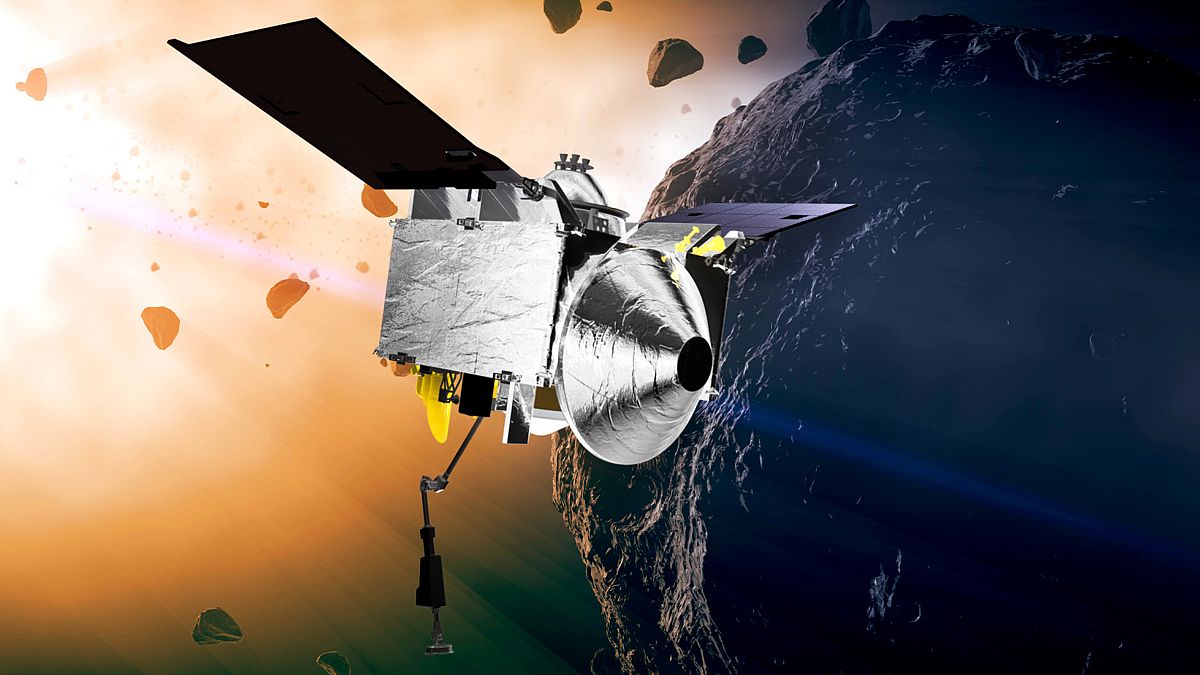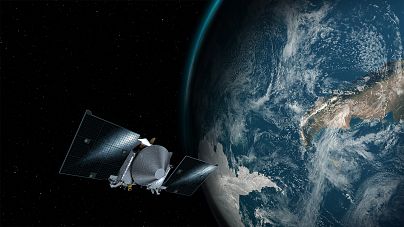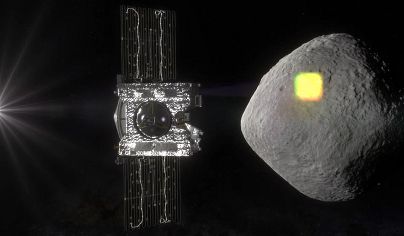We're finally getting serious about planetary defense.
Despite what you may have read, a 1,500-foot-wide asteroid named Bennu is not going to devastate our planet on Sept. 25, 2135. Brent Barbee, an expert on space hazards at NASA's Goddard Space Flight Center, is clear on that point: "It'll only closely approach Earth, not impact Earth," he says. It should miss us by at least 65,000 miles.
But Barbee is also clear that if Bennu were to hit us, the consequences would be ugly. The 40-million-ton space rock would unleash a force equal to 80,000 atomic bombs like the one dropped on Hiroshima, enough to flatten buildings for dozens of miles in all directions. And while Bennu is the most dangerous asteroid on the planetary science watch list, 1,894 others are currently listed as "potentially hazardous objects."
To size up the risk, NASA is sending a spacecraft called OSIRIS-REx to explore Bennu. The probe, shaped like an eight-foot cube with solar-panel wings, launched in September 2016 and will arrive at the space rock this August. When it does, it will nestle up to Bennu, testing rendezvous and landing techniques and collecting a surface sample to investigate the composition of such asteroids.
Meanwhile, Barbee has been leading a study of what it would take to protect our planet if Bennu — or another object like it — were on track for a full-on impact with Earth. The team presented its findings last month, and outlined a concept for a Hypervelocity Asteroid Mitigation Mission for Emergency Response.
HAMMER would be like a planetary defense shield: a fleet of spacecraft that would either bash directly into a dangerous asteroid or set off nuclear charges to deflect it. Barbee calls the HAMMER study "the first steps towards designing spacecraft systems for asteroid deflection."
The first steps, but hardly the last.
Taking a shot at a double asteroid
In fact, the next step in planetary defense is already underway at Johns Hopkins University's Applied Physics Lab. There, a team is developing a mission called the Double Asteroid Redirection Test, or DART, which is scheduled to launch around 2020. It's the first real-world embodiment of the HAMMER concept.
The 1,100-pound DART craft has thrusters, a camera, navigation software, and that's about it. Its design can be simple because its job is simple: find an asteroid and fly into it at full speed. Such a device is technically known as a kinetic impactor, but you can think of it as a battering ram in space.
"We think we understand the physics of asteroid deflection in theory, but we've never performed an experiment at the right scale," says the Applied Physics Lab's Andy Rivkin, lead investigator for the DART mission. "This is a dress rehearsal for a kinetic impactor-style of asteroid deflection."
The target set to be rammed is a double asteroid named Didymos. DART will go after the smaller of the two nearby space rocks, a 500-foot-wide rock nicknamed Didymoon. When the spacecraft reaches Didymoon, it will smash into it at 13,000 miles per hour. After the collision, DART will be destroyed but astronomers on Earth will watch to see exactly how Didymoon is changed and moved by the impact.
The DART data will be especially useful, Rivkin says, because Didymoon is believed to be what planetary scientists term a "rubble pile" — more an assemblage of small rocks than a single big one. It's hard to know how such objects will react to a directed impact without running the experiment.
"DART will also be the first planned visit to a binary asteroid," Rivkin says. Deflecting a double asteroid will be more complicated than dealing with a single incoming body. Soon we'll know more about how to do it.
To nuke or not to nuke?
If a 500-foot-wide asteroid like Didymoon were on a collision course with Earth, Rivkin estimates that two or three DART-like battering rams could be enough to shove it aside — provided we had several years of advance warning. If we had to act quickly to deflect an incoming space rock, we would need a lot more force to avert a collision.
"The very best thing that can be done to prepare for the potential impact of any-sized asteroid is to find it as far ahead of the impact day as our capabilities allow," says Lindley Johnson, NASA's planetary defense officer.
Johnson oversees the Planetary Defense Coordination Office, which coordinates the monitoring of hazardous space objects. If a truly high-risk asteroid turns up, his office will work with other federal agencies to develop a response, perhaps along the lines of HAMMER.
The more immediate problem is early detection. There are a lot of potentially hazardous objects around, and simply finding them isn't easy.
Johnson cites the daunting NASA estimates: There are roughly 25,000 Didymoon-scale asteroids, 230,000 asteroids in the 150-foot range, and millions more of diameters of 100 feet or less. So far, astronomers believe they've found about two-thirds of the large ones, 5 percent of the medium ones, and essentially none of the small fry.
Even the little ones could pack a mighty punch. If a mansion-size stone were to hit Earth over open ocean or remote countryside, it might cause little damage, Johnson says. If it struck a city or even near one, however, it would bring widespread death and destruction. And smaller rocks are generally unseen until they are right upon us.
In short-warning scenarios, kinetic impactors like DART would not be enough. Therefore, the HAMMER study explored the use of nuclear warheads, just as in movies like "Armageddon." Nukes pack a bigger wallop and allow more precision, since we can adjust exactly how close they are to the asteroid when they explode.
For obvious political reasons, nobody is about to conduct a nuclear test strike on an asteroid. But OSIRIS-REx and DART will vastly increase the storehouse of data needed to turn the HAMMER studies into a real mission (even a nuclear one), if and when the need arises. After a long period of stinginess, Congress is also allotting more funding for asteroid surveys, increasing the likelihood that we'll have enough warning to make nukes unnecessary anyway.
It seems that the world is finally embracing an argument that planetary-defense advocates like Rivkin have been making for years: "The asteroid threat is unique. It's the only natural disaster that can be predicted and averted."


